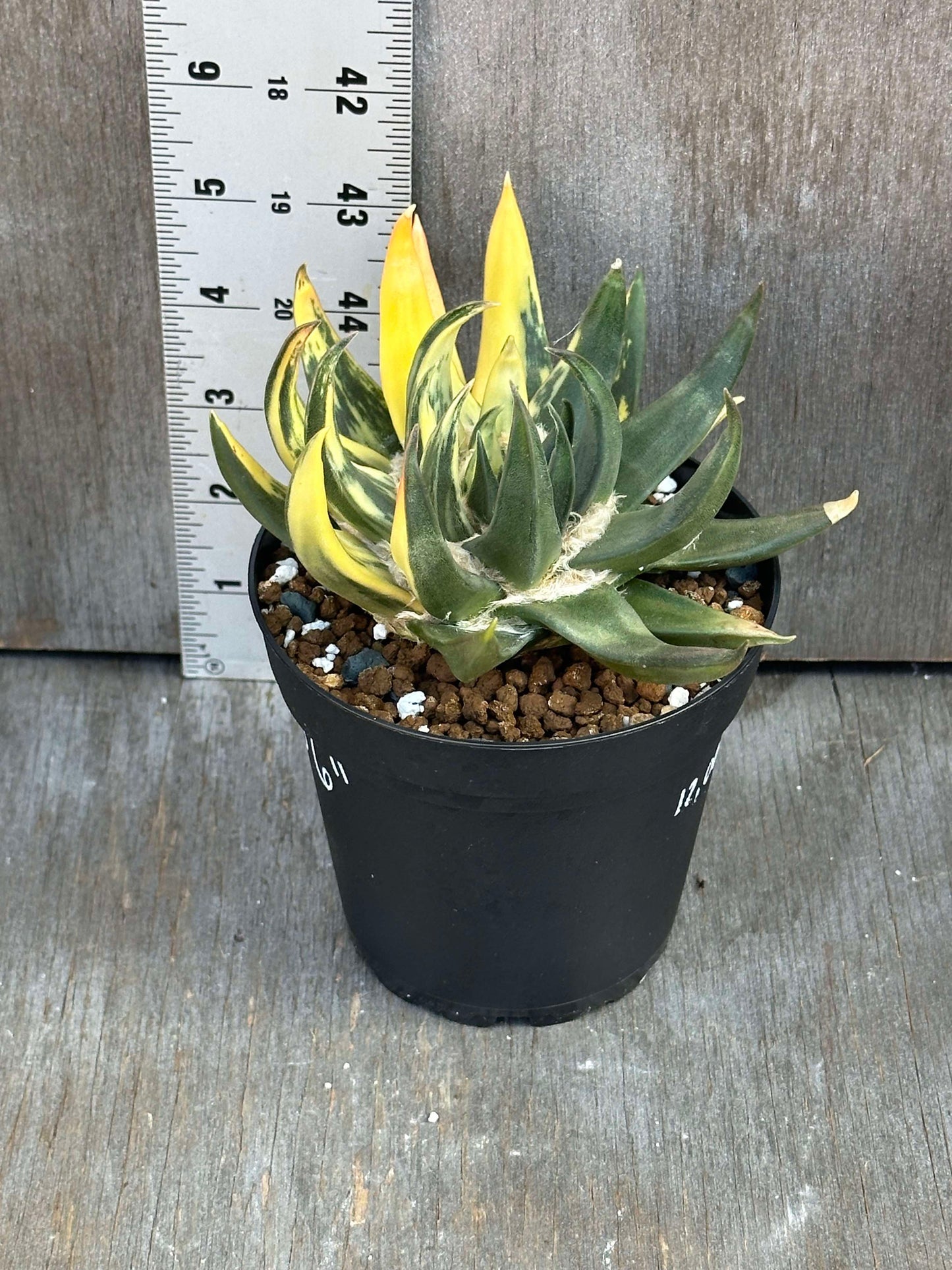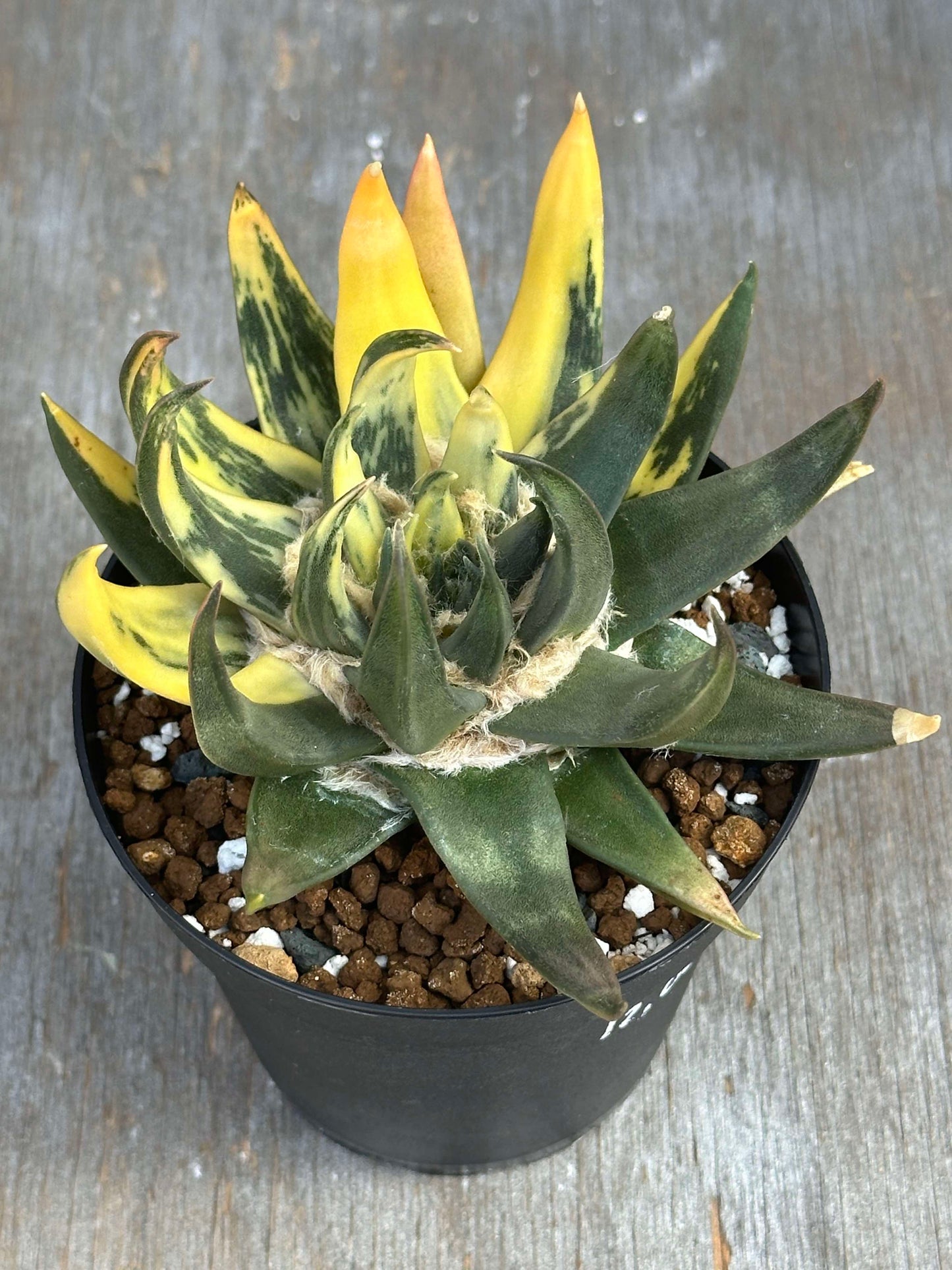Ariocarpus Trigonus Variegated (ATV1) 🌱
Ariocarpus Trigonus Variegated (ATV1) 🌱
This seed-grown Ariocarpus trigonus variegated boasts plenty of bright yellow color and is well established in a 4-inch pot.
Ariocarpus trigonus tends to be solitary cactus, however they do sometimes form groups in older specimens. This species is characterized by shiny brownish-gray-green, acutely triangular tubercles that are sharply keeled backward. It thrives on flat limestone hilltops in coarse, sandy-gravelly soil at altitudes between 500 and 1200 meters. Trigonus bloom In late autumn or early winter, with cream-white to yellowish-white flowers measuring 3 to 5 cm in diameter.
*The plant pictured is the plant that you will receive. By purchasing, you agree to our Shipping Policy and Refund Policy.*
Couldn't load pickup availability
Ariocarpus Genus
Ariocarpus Genus
The Ariocarpus genus, native to the arid regions of Mexico and Texas, is renowned for its unique and intriguing appearance. These slow-growing cacti are characterized by their rosettes of thick, triangular tubercles that lie flat against the soil, often resembling stones or other geological formations, which provide camouflage in their natural habitats. Unlike many cacti, Ariocarpus species do not have prominent spines but instead feature woolly areoles and vibrant, funnel-shaped flowers that bloom in shades of pink, white, or yellow. Despite their slow growth, they are not particularly difficult to cultivate and can be propagated by seed, with grafting techniques often used to enhance growth rates and hardiness.
Ariocarpus Care
Ariocarpus Care
Ariocarpus cacti require a well-draining substrate with minimal organic matter to prevent root rot. They prefer bright, indirect light, mimicking their natural habitat, but can tolerate some direct sunlight. Watering should be infrequent, allowing the soil to dry out completely between waterings, particularly during the winter period. Ariocarpus are sensitive to overwatering, so it's crucial to err on the side of dryness.
A temperature range between 73-90°F (23-32°C) is ideal. When temperatures are below this range for an extended period of time, such as in the winter, it's best not to water until the days are warmer again.
Fertilization should also be minimal, using a diluted cactus fertilizer during the growing season. Regular monitoring for pests and diseases, along with careful handling to avoid damaging their delicate roots, will help keep these unique cacti healthy and vibrant.
Share






